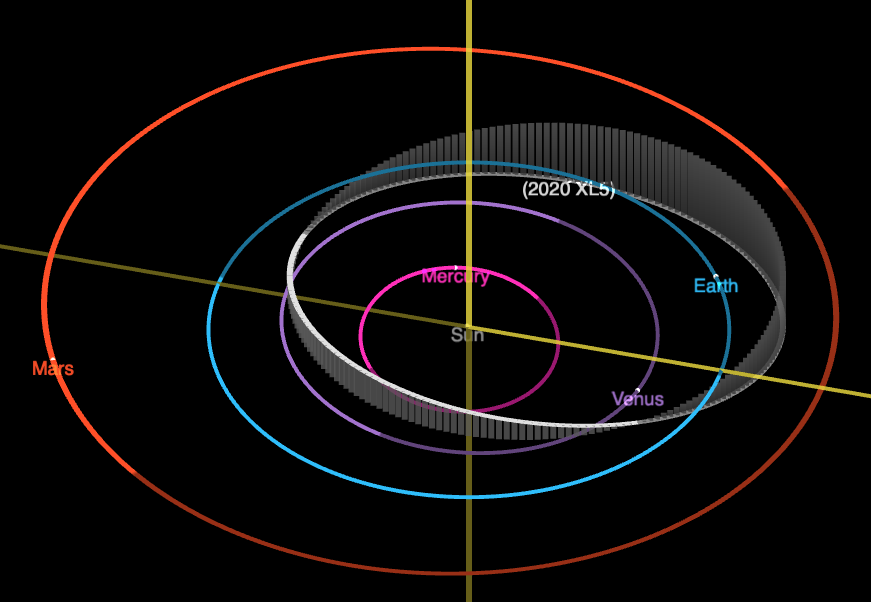Earth has a new companion – and why that’s exciting
Don’t worry: this story is not about the imminent destruction of Earth again. On the contrary: asteroids like 2020 XL5, discovered in 2020, are exciting because they could provide insights into Earth’s early past. 2020 XL5 is a so-called Trojan, as astronomers confirm now in the science magazine Nature (the assumption existed already before): An asteroid which accompanies Earth in its orbit.
If one considers only the system from sun and planet, there are several places, at which the attractive forces of planet and sun cancel each other out. These are the so-called Lagrange points. Objects residing there can orbit the main body (the Sun) without propulsion and thus in a relatively stable orbit. The James Webb telescope has just reached the Lagrange point L2 behind Earth. Other Lagrange points, L4 and L5, are in the planet’s orbit, 60 degrees ahead and behind it, respectively, and 2020 XL5 is staying roughly at L4. So the asteroid is running ahead of Earth.
In reality, however, the solar system consists of more than just the sun and a planet. In the case of Jupiter, which has a large following of Trojans, it still looks quite good for them because Jupiter is so huge and disturbing third planets are far away. In Earth orbit, however, Venus and Mars are constantly getting in the way. The orbits of Earth Trojans are therefore stable only for a while. 2020 XL5 what visited us sometime in the 15th century and will stay for about 4000 years. The only other known Earth Trojan is 2010 TK7, which could stay with us for another 10,000 years. It is currently also moving near L4, but seems to have “jumped over” from L5 around the year 500.
So both asteroids did not form together with Earth, but were probably thrown out of the main belt by Jupiter. What would really interest the researchers now would be so-called primordial Earth Trojans. These are asteroids that formed together with Earth. Their investigation could reveal a lot about the early days of our planet. Whether they exist is unknown. It is not excluded. However, their observation is difficult because of observational geometry: they are close to the sun and therefore can only be seen just above the horizon.
